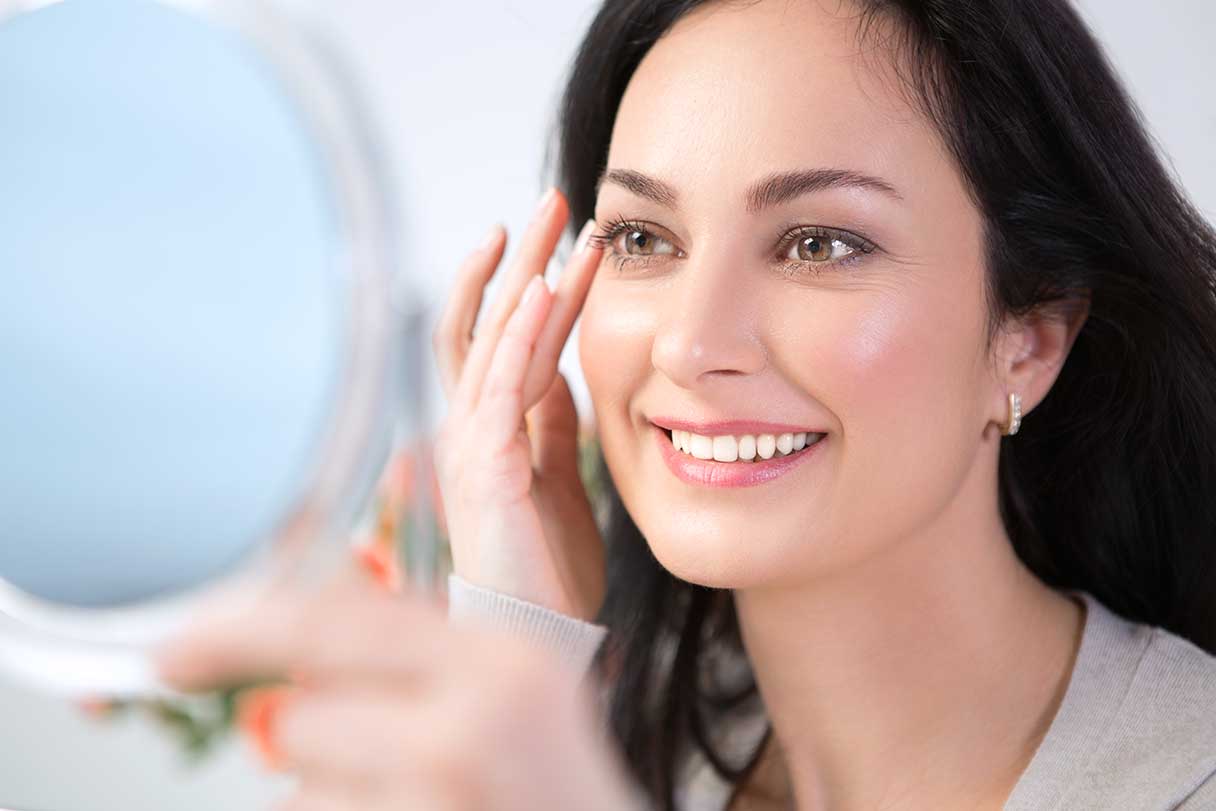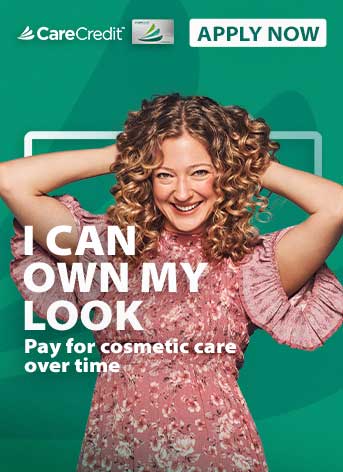In 2025, there will be even more options available to enhance your appearance, and it's becoming less about wanting to look like someone else and more about self-care and being your best self — on your own terms.
Two trends that are expected to continue into 2025 are younger people wanting to get ahead of the rejuvenation game and take charge of the aging process through preventative treatments. In addition, more male patients are opting for many of the same procedures as women to sculpt and define their facial features and physiques.
There’s even more in store for 2025. Keep reading for some key trends we believe will experience increasing demand throughout the year.
1. Strategic Use of Dermal Fillers
Dermal fillers, once mainly used to increase volume in areas like the cheeks, lips and under the eyes, are being used for new applications. Because fillers provide a flexible and effective method for enhancing facial features with precision and subtlety, they can be used in innovative ways.
Two versatile uses of dermal fillers include:
- Filler rhinoplasty. Commonly known as a non-surgical nose job, this procedure uses hyaluronic acid dermal fillers to refine and reshape the nose by smoothing out bumps, lifting the nasal tip or enhancing the overall shape of the nose. The results are immediate, with minimal downtime, making it an appealing and less costly alternative to traditional rhinoplasty for those seeking subtle improvements to their nasal profile.
- Cheek, jawline and chin contouring. Dermal fillers add volume but aren’t just about plumping. When added to key areas of your facial structure, fillers can help you achieve a more defined jawline and improve facial balance and profile without the need for surgery.
2. Antiaging Aesthetics
When it comes to antiaging treatments, younger people are increasingly turning to preventative therapies. These innovative, minimally invasive or non-surgical approaches leverage your body's natural healing processes to stimulate collagen production and enhance skin health, often offering natural-looking results.
Here’s a closer look at some of these treatments:
- Platelet-rich plasma (PRP). A PRP facial, often referred to as a vampire facial, involves a multistep process that utilizes microneedling and your body's own platelet-rich plasma to rejuvenate the skin — no vampires required.
- Facial fat grafting. Fat grafting, which involves transferring fat from one part of the body to the face, is considered the ideal facial filler. It carries no potential risk of reaction because it comes from your own body, and it offers the most natural results. It can be used to add volume to any part of the face to improve signs of aging, such as lines and folds, as well as sagging skin.
3. Customized Mommy Makeovers
After childbirth many women experience physical changes, such as sagging breasts, a less defined waist and stubborn fat that won't go away, no matter how much you exercise or diet. Mommy makeovers can help women get back into their prepregnancy clothes and regain body confidence.
To address the physical changes that can occur with pregnancy and breastfeeding, a mommy makeover involves a personalized plan that combines minimally invasive cosmetic enhancements and traditional plastic surgery techniques.
The procedures are tailored to your needs and goals and can include:
- Tummy tuck. This tightens the abdominal muscles, removes excess skin and fat and sculpts the waist.
- Breast augmentation. The ever-popular breast augmentation or “boob job” involves increasing the size and shape of the breasts using either implants or fat transfer.
- Liposuction. This procedure removes stubborn fat. Some of the most common areas include the hips, tummy and under the chin.
- Non-invasive fat removal. Designed to reduce specific body areas over time without incisions, these procedures, which use cryolipolysis, fat-dissolving injections or other technologies to destroy or reduce fat cells, are ideal for smoothing and trimming targeted areas.
- Buttock enhancement or augmentation. These procedures use implants or fat grafting (also known as a Brazilian butt lift or BBL) to enhance the contour, shape and size of your buttocks, helping you fit into clothes better.
- Femilift rejuvenation. This non-surgical alternative to vaginal rejuvenation surgery uses laser energy to tighten and strengthen vaginal tissue, helping reduce discomfort and improve intimacy issues.
4. Body Contouring After Weight Loss
Thanks to the development of effective weight loss medications, losing weight has never been easier. But rapid weight loss has consequences, including excess skin on the face and body, which can impact your self-esteem and overall satisfaction with your weight loss journey. This has contributed to an increased demand for procedures like body contouring and facial rejuvenation.
Upper body lifts
An upper body lift typically targets the upper back, breasts and arms, areas where excess skin and fat can accumulate, leading to sagging and a lack of definition. It may involve a combination of procedures, commonly:
- Breast lift. A breast lift raises and firms the breasts by removing excess skin. This can be done using a variety of techniques, depending on the amount of breast tissue you have and your goals. This procedure can also be combined with implants or a breast reduction.
- Arm lift. A brachioplasty focuses on the upper arms, removing excess skin and fat often referred to as bat wings. The result is smoother, more contoured arms.
Lower body lifts
A lower body lift addresses the lower abdomen, buttocks, thighs and hips using a combination of procedures. These often include:
- Thigh lift. This procedure removes excess skin and fat on the inner thighs, creating a more contoured and proportional look.
Skin tightening
Non-surgical skin tightening will likely also top the list of cosmetic procedures for 2025, with many wanting to enhance their skin's appearance and improve and restore contour with less downtime and fewer scars. These procedures use advanced technologies to stimulate collagen production, tighten loose skin and improve skin texture.
Three popular options include:
- Ultrasound therapy. This relies on focused ultrasound energy to lift and tighten the skin and can provide a non-invasive facelift effect when used on the face and neck. Ultrasound therapy can also be used to tone other areas of the body like the abdomen, buttocks and thighs.
- Laser therapy. This provides similar aesthetic benefits to ultrasound but uses focused light instead of energy to produce results.
- Radiofrequency (RF) therapy. This works by heating the deeper layers of the skin, which encourages collagen production and results in tighter, smoother skin.
5. Midlife Rejuvenation ("Menopause Makeover")
It’s no wonder menopause has long been called “the change” given all the transformations a woman’s body undergoes during this transition. The menopause makeover has emerged as a holistic approach to tackle the effects of hormonal shifts, such as weight gain, sagging skin and loss of muscle tone, to name a few.
This involves a combination of cosmetic procedures targeting these issues, such as:
- Facial rejuvenation. Many women opt for facial cosmetic procedures to restore a youthful appearance. This can include lower-cost treatments like BOTOX® Cosmetic to smooth wrinkles or surgical procedures like eyelid surgery or facelifts to combat sagging skin.
- Body contouring. Procedures such as liposuction or tummy tucks target stubborn fat deposits and loose skin associated with menopause. These body contouring options enhance natural curves and can help women feel more confident.
- Breast surgery. By the time a woman reaches menopause, factors such as hormonal changes, weight fluctuations, past pregnancies, breastfeeding and the effects of gravity can change the size, shape and position of breasts. Fortunately, there are several procedures that can provide a more youthful look. The cost varies depending on the type of breast surgery.
6. Revision Breast Surgery
Also known as downsizing, this trend reflects a shift toward embracing natural beauty and authenticity by opting to reduce the size of previously enhanced features to achieve a more balanced look. This may involve:
- Breast implant removal. Many women are opting for smaller breast implants or even removing them altogether (referred to as explant surgery) to align with their personal aesthetic goals and lifestyle changes. Some women are not candidates for complete removal of implants but may achieve their body goals with an implant exchange (reducing the size and/or shape of the implants) along with a breast lift.
- Breast reduction. This procedure involves removing excess skin, tissue and fat from the breast to make them smaller and more proportional. Breast reduction surgery can improve the appearance of the breasts and reduce discomfort associated with large breasts.
7. Physique-Focused Procedures for Men
The number of men seeking cosmetic surgery is on the rise, with surgeons tailoring procedures to help men achieve their physical goals. These often include a toned core and a contoured chest, enhancing their appearance both in and out of clothing.
This is achieved with the following procedures:
- Abdominal etching with targeted liposuction. When crunches don’t do the trick, this technique can help men seeking a more defined and athletic abdominal appearance. The precise removal of fat deposits around the abdominal muscles enhances natural contours and creates the appearance of a well-defined six-pack.
- Breast reduction for gynecomastia. Gynecomastia surgery, or male breast reduction, is increasingly popular among men who are self-conscious about excess breast tissue. The procedure involves removing excess fat and glandular tissue to create a firmer, more masculine chest contour.
The new year offers opportunities for a new you. These key trends can help you meet your cosmetic and aesthetic goals for 2025 so you can be your best self. As with any cosmetic procedure, there may be potential side effects or complications, so be sure to consult with a qualified cosmetic surgeon for medical advice.
Financing Cosmetic Procedures With the CareCredit Credit Card
Ready to revitalize your appearance and boost your confidence? The CareCredit credit card makes it easy to pay for dermal fillers, mommy makeovers and more, and related expenses not covered by health insurance.* Use our Acceptance Locator to find a doctor or cosmetic surgeon near you that accepts CareCredit so you can stop dreaming and start living your best life. Continue your wellness journey by downloading the CareCredit Mobile App to manage your CareCredit account, find a provider on the go and easily access the Well U blog for more great articles, podcasts and videos.
In addition to cosmetic procedures, you can also use your CareCredit credit card for dentistry, pet care, vision, hearing, health systems, dermatology, pharmacy purchases, spa treatments and so much more within the CareCredit network. How will you invest in your health and wellness next?
Expert Reviewer
Dr. Justin West, M.D., F.A.C.S.
Dr. Justin West is a board-certified plastic surgeon and is the medical director at Finesse Plastic Surgery in Orange, California, focusing on aesthetic surgery of the face, breasts and body. He creates results that enhance his patients’ natural beauty and has been recognized with awards that include Top Surgeon in Newport Beach, RealSelf Top Contributor and Top Doctor and Patients’ Choice.
Author Bio
Adrienne Santos-Longhurst is a writer who has been covering health and lifestyle for almost two decades. Her work has appeared in Healthline, Insider, Medical News Today and more.








